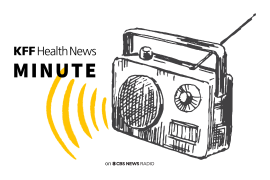Ruling on Stroke Treatment Guidelines Illustrates Difficulty of Agreeing on Best-Treatment Practices
A decision last fall by the National Quality Forum to reject a proposal that called for CT scans on stroke patients to be taken and read within 45 minutes of entering the emergency department illustrates the difficulty of developing best-practice guidelines for medical care, the Wall Street Journal reports. The Obama administration currently is advocating for the medical industry to develop more guidelines as a way of controlling health care spending, according to the Journal.
The standard stroke treatment involves giving patients a clot-dissolving drug shortly after arriving at a hospital. That method can reduce the effects of stroke and limit permanent disabilities for most stroke patients. However, for some patients the drug can increase brain bleeding and the risk of death. Current stroke association guidelines recommend administering the drug within three hours of a stroke (although this might be extended). According to stroke experts, the best way to determine how a patient will react to the drug is by quickly reading the results of a CT scan. However, NQF -- which establishes committees of physicians and other medical experts to write multiple guidelines or "quality measures" used by CMS to evaluate hospitals -- rejected the rule because it said that the imprecise wording of the proposal elicited numerous questions.
According to some neurologists, the forum's rejection of the rule "threatens to compromise stroke care nationwide, possibly resulting in more deaths and disabilities among stroke patients." Many hospitals that do not specialize in the treatment of strokes do not quickly perform CT scans. In addition, physicians who treat strokes say that a small percentage of patients receive a clot-dissolving drug. Hospitals that receive Medicare funding will be required to publicly report as early as next year how well they comply with other stroke treatment guidelines, but because of the NQF ruling, they will not be required to include whether they quickly perform CT scans. Some neurologists had hoped that adoption of the rule by NQF would help "prod many community hospitals to upgrade their stroke treatment," the Journal reports.
David Levin, chair emeritus of radiology at Thomas Jefferson University and co-chair of the committee appointed by NQF that rejected the 45-minute rule, said, "No one is denying that a person with a stroke should have a CT scan very quickly," but the committee believed that the rule was written imprecisely. He said, "The committee asked for a better definition of the word 'stroke.' You've got to be extremely precise." NQF President Janet Corrigan said that the rule needed to be more refined but that "it has the potential to be a worthy measure." NQF said it is willing to reconsider its ruling, the Journal reports (Burton, Wall Street Journal, 4/21).






